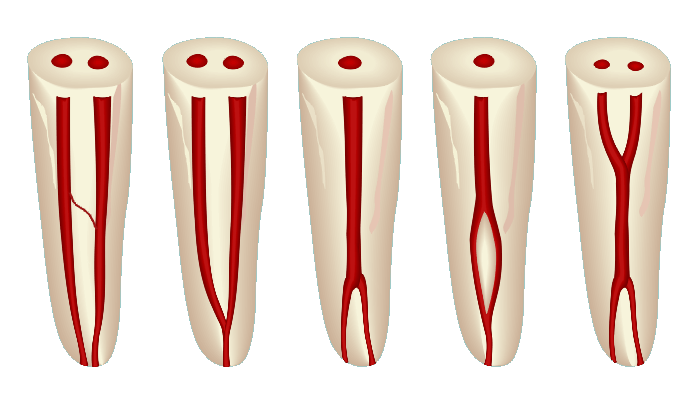Double canals


Double canals means two canals in one root. Double canals can be separate from the pulp chamber down to the apex, both having their own apical foramen. However, the canal may also begin as one canal, divide into two canals, and join again before the apex.
Double canals are almost always situated as buccal and lingual canals in the root, which makes their detection in radiographs difficult. However, knowing the possibility of their existence together with careful analysis of radiographs and clinical examination helps to find double canals. From the clinical point of view it is important to be aware of the possibility of double canals.
Double canals can be present in most roots. Maxillary incisors and canines are the only teeth where double canals are practically never found. Also the palatal and distobuccal roots of upper molars usually have only one root canal.
Double canals are most frequent in mesial roots of mandibular molars, followed by the mesiobuccal root of the maxillary first molar, upper second premolar and lower first premolar. Roughly one fifth of lower incisors and canines also have double canals, but most of these join shortly before the apex.